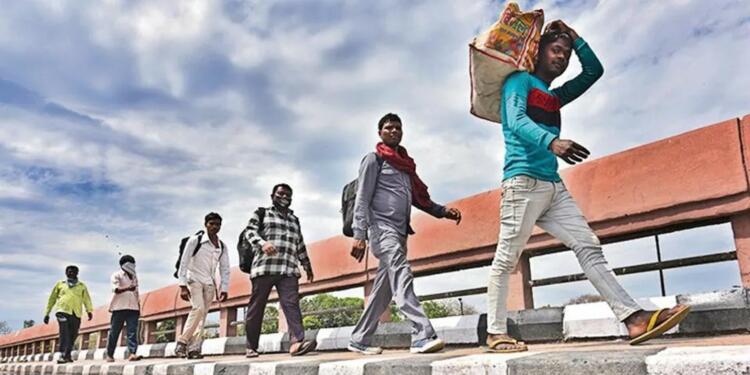One issue which the Modi government drew flak for during Covid days is handling of the internal migration crisis. Let’s face it, humans travelling thousands of miles barefoot in 21st century is just inhuman. Rather than a hurried approach, a holistic perspective would help more.
Figures on Internal migration
According to the latest available official data (Census 2011), 38.6 per cent of Indians are migrants in their own country. These include rural-rural, rural-urban, urban-rural and urban-urban. Rural-rural migration comprises 54 per cent of total migration. Compared to 2001, the absolute number has only increased by 45 per cent. To put things in perspective, India’s population increased by only 18 per cent during that time.
Looking at it from a state perspective, contrary to established opinion, inter-state migration comprises only 12 per cent of total migration. Main sources include Uttar Pradesh, Bihar, Rajasthan, Madhya Pradesh, Andhra Pradesh, Chhattisgarh. Chief Destination states include Delhi, Maharashtra, Gujarat, Haryana, Punjab and Karnataka.

Flaws of Internal migration
If you explain that figure to an average layman, the likely response will be disdain. For one, people often blame the poor human development indices in the source state for this phenomenon. That is almost always traceable to a poor political environment. This kind of phenomenon leaves people illiterate and unskilled. Resultantly, they have to migrate to other states or districts, killing any chances of bringing change in the next election cycle. Grinding becomes all too impossible. The reasoning is true, but there are doubts about the spirit behind that.
Similarly, there is an anti-migration sentiment in the destination states. Locals often accuse outsiders of diluting the demographic profile of the state. Modern day Bengalurians are often found ranting about the influx of north Indians in the city. One reason behind the emanation of this fear is snatching of economic opportunity from the locals. In the past, people like Raj Thackeray have also raised concerns about the presence of Upites and Biharis in Maharashtra.
Also Read: Finally ! Big move by Amit Shah to curb illegal immigration
Positive effects on population
Amidst all this, the positive aspect of migration gets overshadowed. Migration is a huge balancing factor when it comes to fulfilling the dearth in demand and supply of labour. Often the migrants’ willingness to work on relatively cheap labour prompts companies to invest more in states where these people migrate. With the passage of time, a section of migrants also increases their skills, leading to increase in remuneration and quality of life.
A 2018 report by the Food and Agriculture Organisation acknowledges that migration helps in improved food and nutrition security. Then there is the advantage of sending remittances. More often than not, these remittances are lifelines of the rural economy.
Moreover, the argument of dilution of demography is hollow in its foundation. Internal migration only increases cultural diversity. But, if locals are not willing to accept it, a calibrated and harmonious approach is the need of the hour.
Support TFI:
Support us to strengthen the ‘Right’ ideology of cultural nationalism by purchasing the best quality garments from TFI-STORE.COM


































